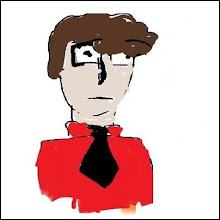Ever since Born Again, Daredevil has been the Job of the Marvel Universe. After his most recent life destroying events, Hornhead has been re-launced, for the second time, from #1. The first time this was done, Kevin Smith deliverd some half warmed leftovers scraped together from Born Again and Kraven's Last Hunt. At the opposite end of the spectrum, Mark Waid has started an exciting new era with a great first issue.
In his last ongoing series, Daredevil lost the love of his life to murder, had his secret indentity outed, got married, was sent to prison, got divorced and then was possessed by a demonic creature and nearly brought about the end of the world. What we have here is fresh start.
Waid's grasp of Daredevil's world is great and the art does an absolutely wonderful job of portraying, in a visual manner, the entirely non visual way Daredevil sees the world. We see Matt struggling with the public knowledge of his secret identity, we see him in court, we are reminded that despite his superpowers he does still have a disability. The pencils by Rivera show beautiful landscapes defined by Murdock's radar senses. At the end, Daredevil is surrounded by anti-radar chaff, blocking his radar senses. So often, Daredevil leaps and bounds like a horned Spider-Man, we forget he really does have a disability. For most people, being surrounded by confetti would be a minor nuisance. It leaves Daredevil helpless.
The back up feature gives us more artistic flourishes showing how Daredevil sees the world. It also addresses the past tragedies that have led the character to this point. Matt tells Foggy straight out, he's decided to live in denial. Which will end in tragedy, of course, it always does. But I'm excited to see how.
5/5
